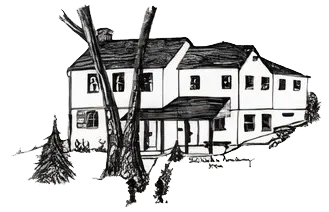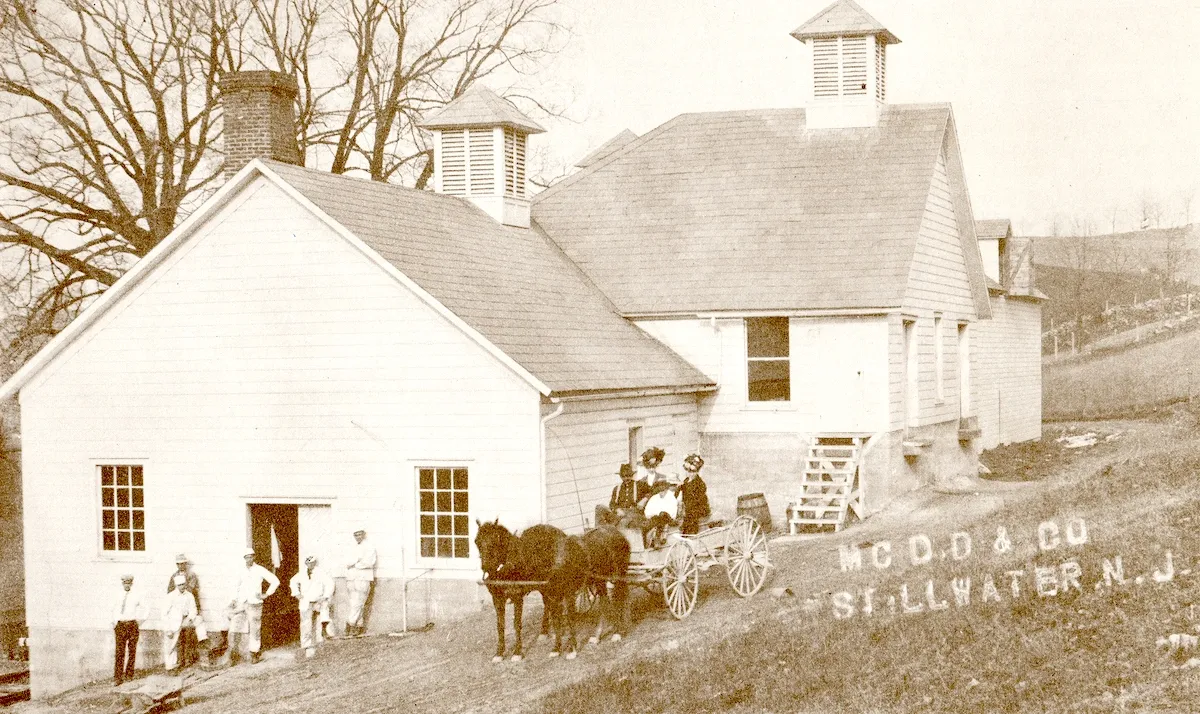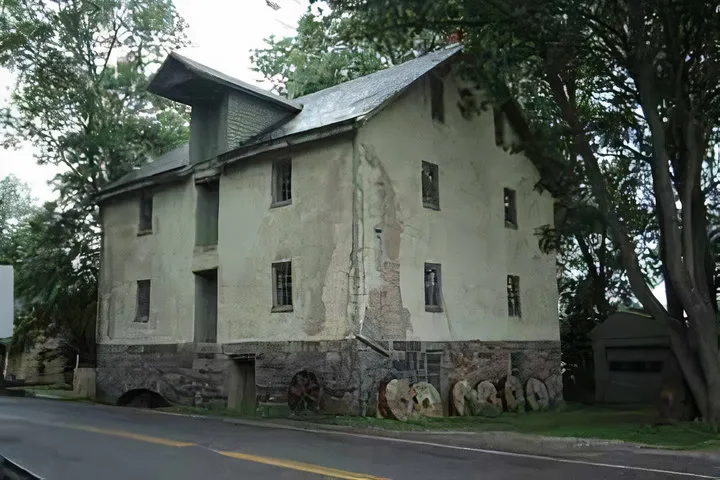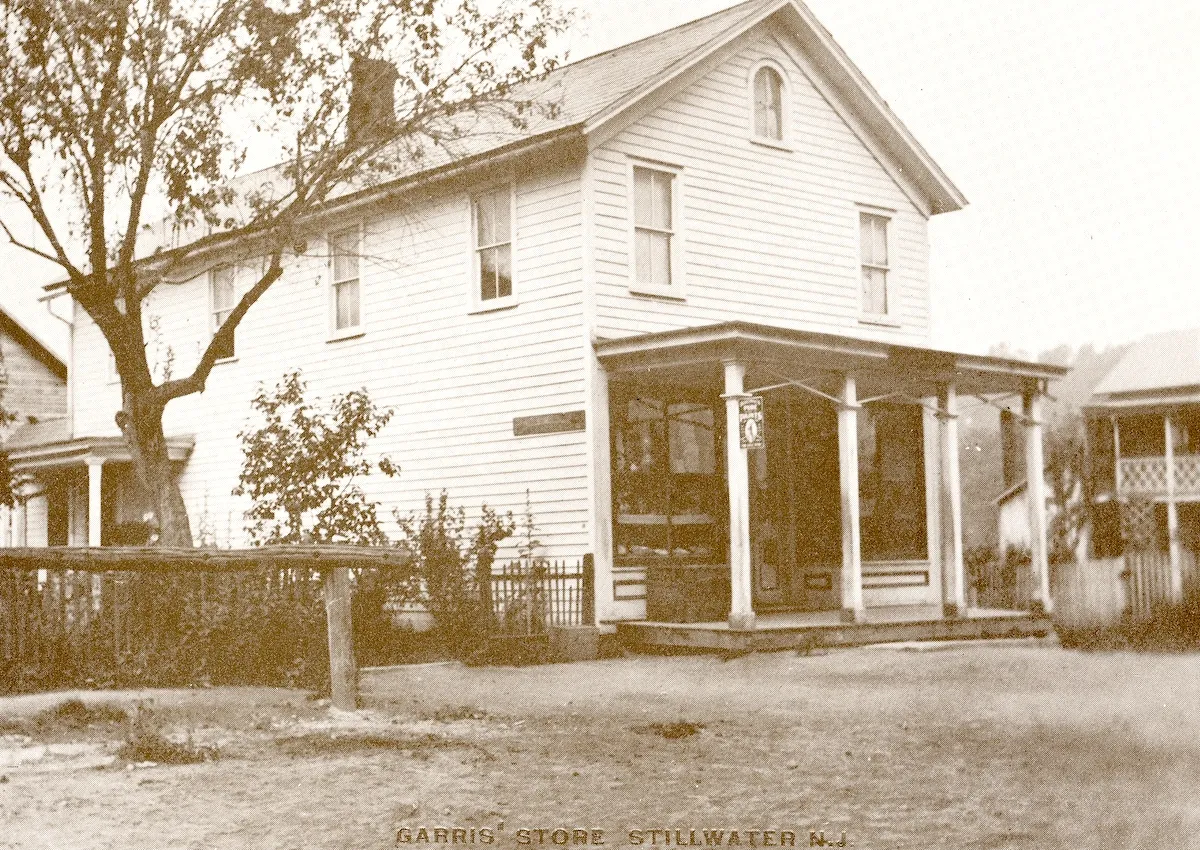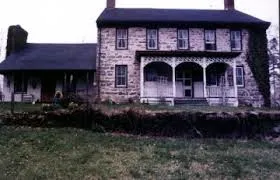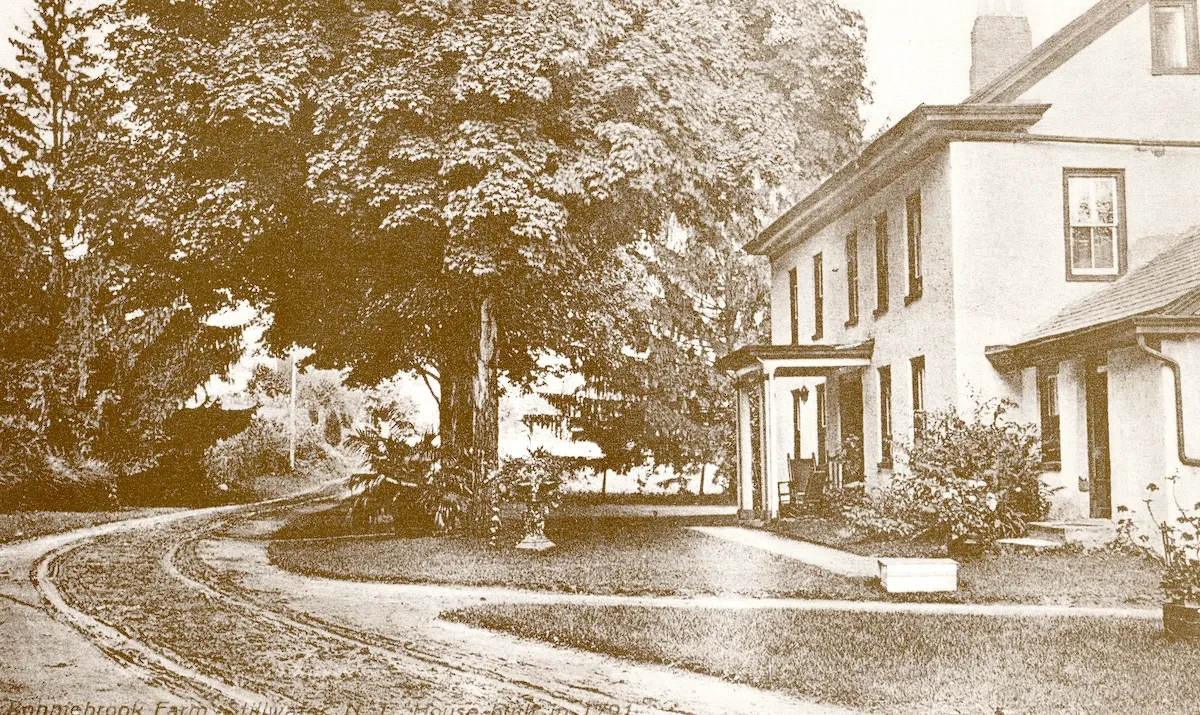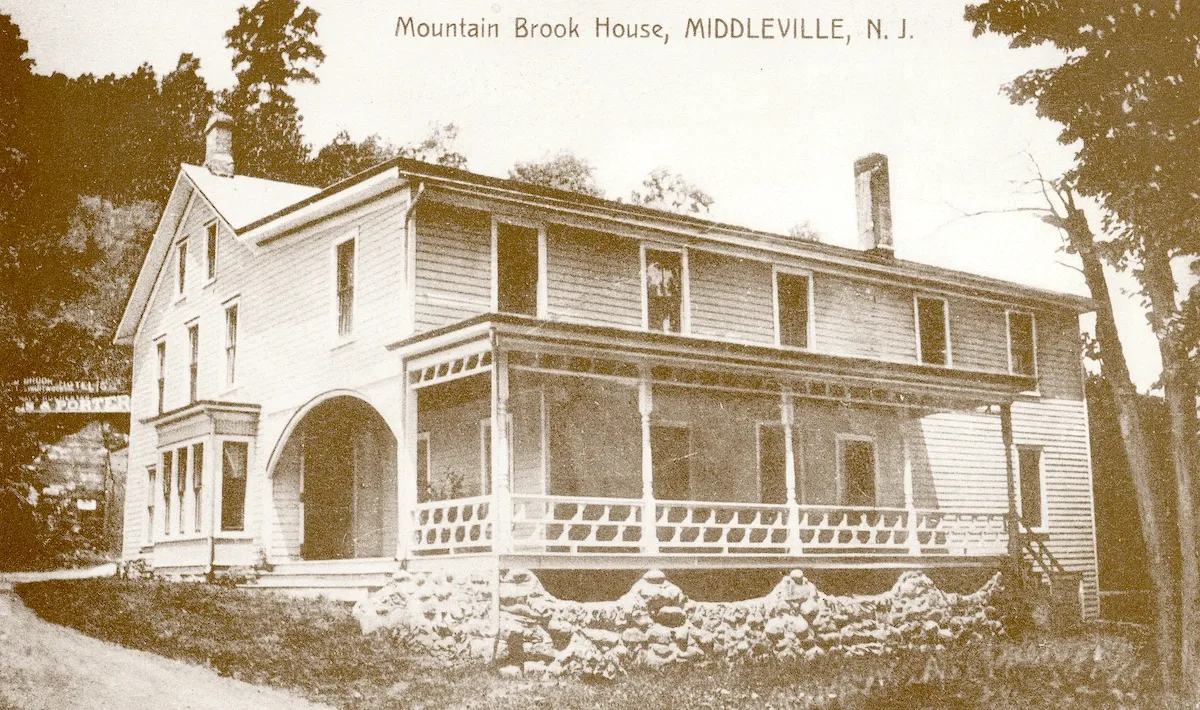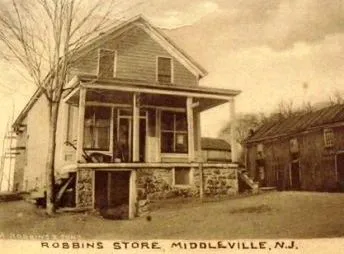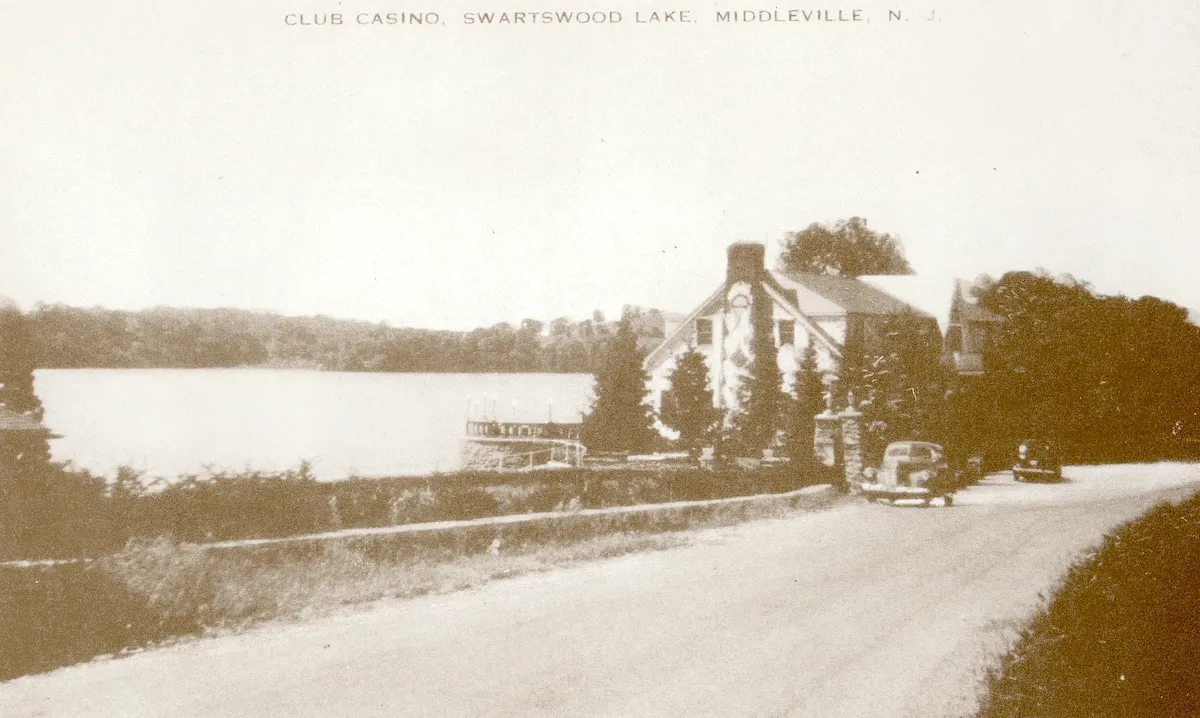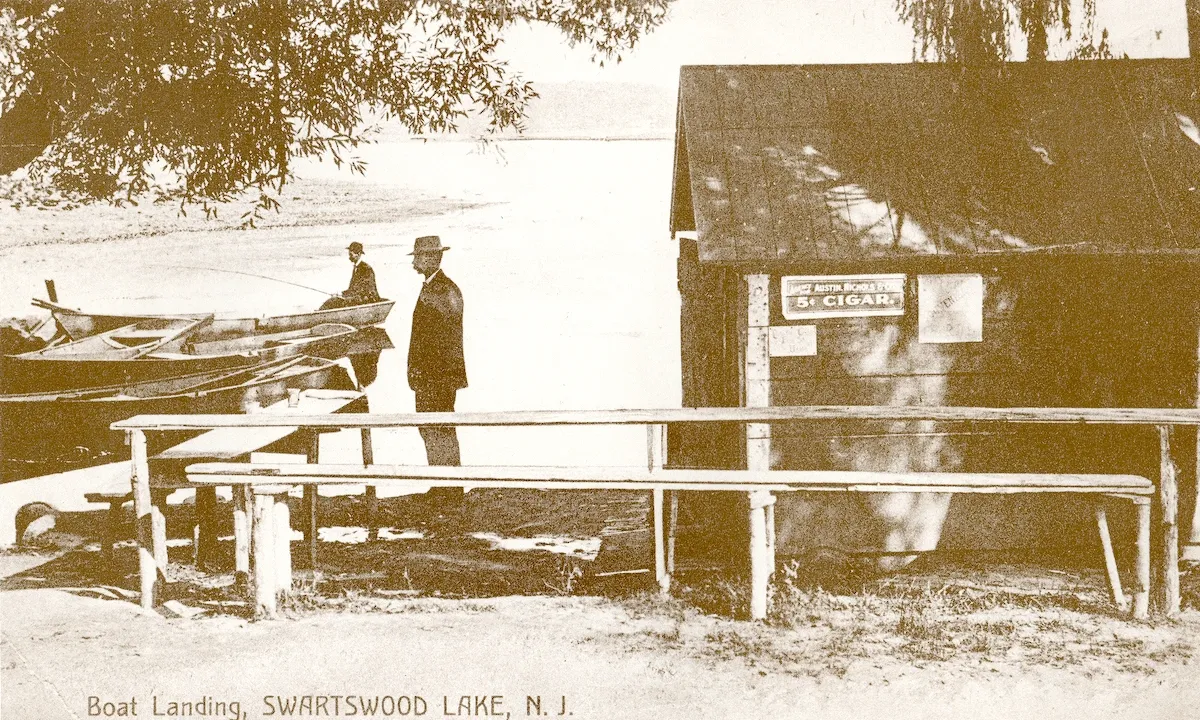Township Overview
Stillwater Township sits in the limestone valley of the Kittatinny Mountains, part of the Appalachian range which runs from Canada to Alabama. It is one of the most picturesque of the 24 municipalities in Sussex County and is an area rich in lakes, forests and farmland. The Township covers 29 square miles and includes the villages of Stillwater, Middleville and Swartswood. Together with the residential lake communities of Crandon, Plymouth and Paulinskill Lakes, the Township has a total population of around 4,000 people.
(Click here to read the Stillwater History Timeline)
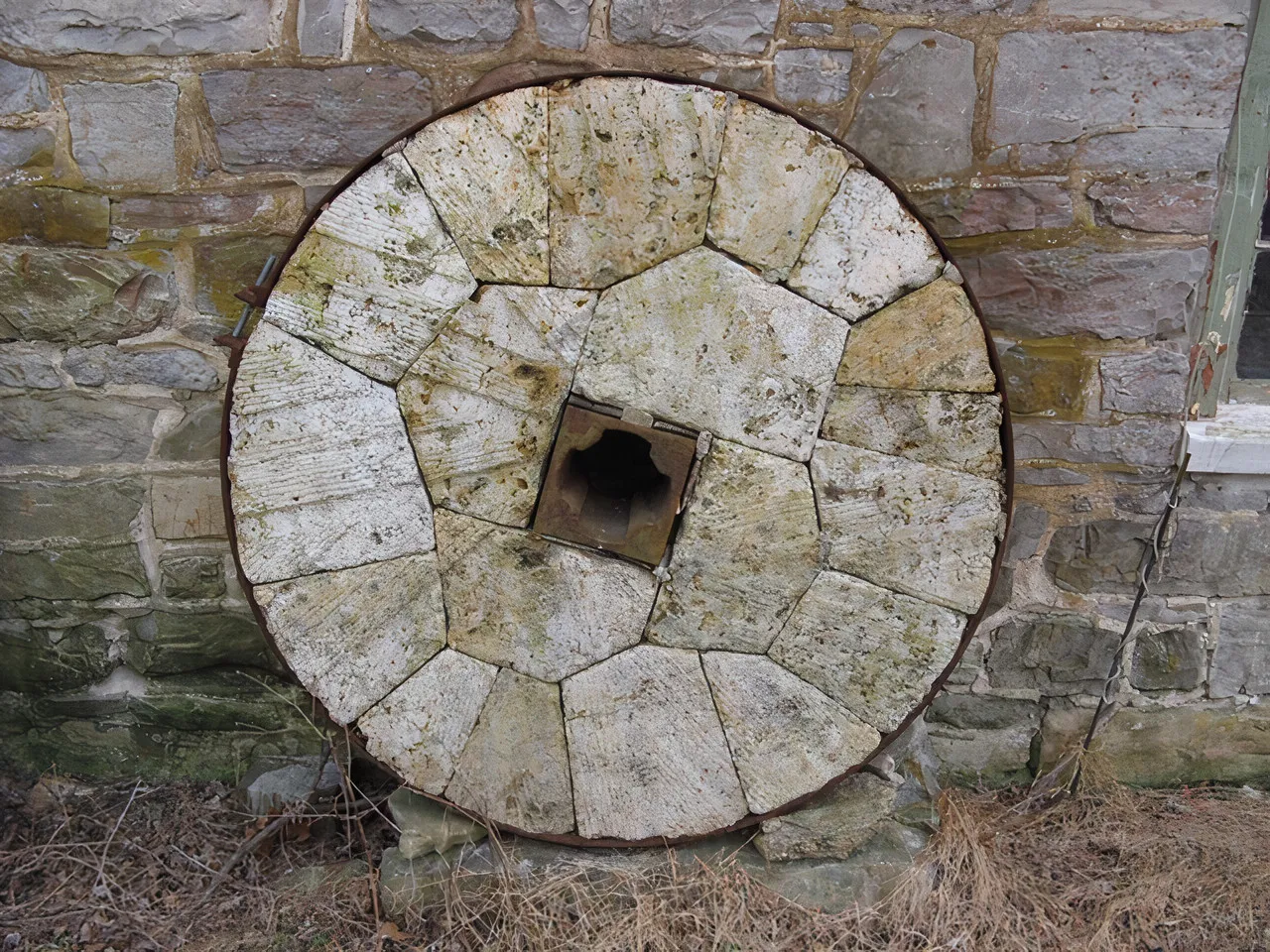
Stillwater was settled by Europeans in 1741. It was originally part of Hardwick Township and became an independent township in 1824. Fredon Township separated from Stillwater in 1904 and the railroad tracks of the Susquehanna and Western Railroad became the boundary between the two townships.
Up until World War II, Stillwater remained a largely agricultural community with a long history of dairy farming. After the war, the effects of nationwide modernization and notions of “progress” began to transform the region. New large-scale farming practices began to replace the old family farms and the construction of Route 80, as part of the 1950’s Interstate Highway System, made the beautiful Sussex County countryside more accessible to commuters. Quick residential development resulted. While Stillwater Township has become less remote, its villages have retained the rural charm of its earlier days, thanks to the preservation of many original structures and careful conservation of the surrounding natural environment.
Original People
Stillwater Township is also rich in cultural history and has played an important role in the complex story of our American nation that continues to unfold in today. Sussex County’s first inhabitants were the ancestors of the indigenous Lenape people who lived in the area for more than 10,000 years before the arrival of the Europeans. Called “Delaware Indians” by early settlers, their ancestral homeland spreads across the Delaware River into Pennsylvania and parts of southern New York State. Remnants of their civilization can be seen in museum collections and also in the burial sites and rock shelters that are scattered across northwest New Jersey. Most of the Lenape people now live in Oklahoma and Canada although a community of members of the Turtle Clan has remained in the region of the Ramapo Mountains where they continue to preserve and practice their cultural traditions.
Stillwater Village
Throughout its history of almost three hundred years, the village of Stillwater has sustained its unique character thanks to the determination of generations of proud residents. Many of its earliest structures are well preserved, including residences dating back to the 1700’s.
The old Stillwater Gristmill, which was the longest continually operational mill in New Jersey, stands proudly on the bank of the Paulinskill River.
Garris’ General Store, first opened in 1876, continues to run a thriving business although its menu has been adapted to the culinary tastes of the day.
Refugees from Germany
The first Europeans settlers were Germans from the Palatine region of Prussia where they cultivated vineyards and other crops on farms along the Rhine River. Religious wars had brought endless misery and devastation to their homeland and destroyed their livelihoods. They joined a major exodus of Teutonic people who saw migration as the only solution to survival. They heeded the inspiring claims of William Penn, the English Quaker who had founded the city of Philadelphia in 1682 and was selling large parcels of the Crown’s land in the colonies of Pennsylvania and New Jersey. The offer included a guarantee of religious freedom and economic opportunity.
Peter Bernhardt and his sons-in-law, Casper Shafer and J.G. Wintermute were the first of several waves of immigrants to settle in Stillwater. The arrived in 1741. They travelled via London to Philadelphia and headed up the Delaware River to claim land they had bought sight unseen. They were welcomed by a landscape of rolling hills lush with dense forests and pristine lakes and streams. As their ancestors had done before them, these brave trailblazers built farms and homes along a generous river which nourished their development. The Paulinskill River provided a source of energy to turn mills, water to irrigate fields and a transportation artery connecting them with Philadelphia and the rest of the world.
Experienced farmers, the German pioneers put their hands to the plow, cleared rocky land and felled trees in thick woodlands. They built mills, foundries, kilns and tanneries and soon sent products down river which they could trade for other merchandise. Demonstrating extraordinary courage and physical stamina, they transformed the region into a flourishing agricultural hub on the Paulinskill River. Down in Philadelphia, news spread of prosperity upriver and a growing number of immigrants came to settle down in Stillwater.
The Hands that built Stillwater
The speed with which the area developed was remarkable and is credited to the well-known discipline and work ethic of the Palatine Germans as well as the indisputable contribution of enslaved people from Africa. While William Penn and the Quakers condemned the institution of slavery, many of New Jersey’s immigrant settlers chose to benefit from the enormous economic advantage afforded them by free labor. The founding fathers of Stillwater were no exception and as German farms increased in New Jersey, the use of enslaved laborers became commonplace. By the middle of the 1700’s there were around 16,000 enslaved Black people in the colony. Modern-day historians readily acknowledge the contribution which these people made to the rapid development of Sussex County.
Fighting for their Country
Despite the hefty support of enslaved labor, life was endlessly daunting for the German farmers. Having escaped the misery of wars in their homeland, they found themselves in the midst of new conflicts in America. They were constantly under threat from attacks by Native American warriors siding with the French in the so-called “French and Indian War”, a conflict fought between the imperial powers of England and France over Indian lands to the West. Casper Shafer built stockades around his stone house on Main Street to protect his family during this period.
International military conflicts also brought hardship. The early settlers fought in the Revolutionary War of 1776 and their offspring took part in the War of 1812, the Civil War and all wars that followed. Although New Jersey did not guarantee the German immigrants the peace they had yearned for, the religious freedom and individual rights they enjoyed ennobled their sacrifice.
Famous Forefathers of Stillwater
Casper Shafer (1712-1784) built his first grist mill upstream in 1743 and replaced it in 1764 with a larger structure that stands today on the present site. He developed a profitable enterprise shipping flour and other goods by flatboat down the Paulinskill and Delaware Rivers to Philadelphia. Shafer was a strong supporter of American Independence and was one of the three delegates from Sussex County to serve in New Jersey’s first legislative assemblies (1776-1779). The stone house which he built for his family in the early 1740’s still stands on Main Street.
J.G. Wintermute built the first iron foundry in Stillwater to produce objects like stoves and ammunition, crucial to the Revolutionary War effort. One cannon ball from the Wintermute Foundry is on display in the Museum and remnants of the old foundry still exist on Old Foundry Road. J.G. Wintermute built his first house in 1755 and his son Peter Wintermute built a house in 1791 which is now called “Bonnie Brook” and still stands proudly on Route 521.The Wintermute family was one of the most prominent in Stillwater throughout the next two centuries and its members contributed considerably to the development of the community.
Middleville
The tiny hamlet of Middleville, about three miles north of Stillwater, was settled by the Huff brothers in 1776. For the first century, fewer than two or three dozen people lived there. It was originally named “Gin Point” and had a reputation fitting of the title, according to a letter written by one of the early preachers of the Stillwater Presbyterian Church. At first the town served mainly as a postal stop, changing its name to “Centerville” to reflect the distinction of being located exactly midpoint between New York City and Scranton. In the 1800’s, Peter Wintermute of Stillwater built a saw mill and grist mill on Trout Brook along Pond Brook Road.
The photograph here shows the Mountain Brook House that was built as an inn and tavern in 1832. Over the years it has had many owners and names, including the Gin Point Inn, the Middleville Inn and most recently, the Hyde-Away restaurant.
The popular Robbins Store, which still houses the Post Office, was built in 1837 by Hampton Andress, and Alfred Robbins bought it in 1902. Donald and Shirley Robbins took over the store in 1946 and ran it until Donald’s retirement from the Post Office in the 1980’s. The penny candy sold at Robbins’ Store was a memorable summer highlight for the Girl Scouts who hiked over from Camp Lou Henry Hoover with their troop.
Swartswood
Swartswood was a thriving resort area in the 1800’s and early 1900’s. Its development sprang from the efforts of Jonathan Oliver, a visionary land developer from Johnsonburg who bought a large tract of property from Patrick Cassidy in 1824. Oliver created a village on his property with a sawmill, tannery and houses for his employees. He upgraded the town’s image by changing its name from the original “Rum Corners” to “New Paterson.” Over time hotels and inns appeared along the lake to accommodate summer visitors, many of whom became year-round residents. In the 1930’s the Hill family built Club Casino on Route 521 to attract New Yorkers and in 1938 John and Andrew Rivera opened the North Shore House as a resort for couples and families.
The town was named “Swartswood” only in 1852 when it was decided that “New Paterson” was too easily confused with the city of “Paterson” to the east. Naming the town “Swartswood” was a controversial decision because it would inevitably resurrect the memory of a tragic episode in colonial history which had haunted the town for decades. In 1756, during the French and Indian War (1954-1763), the Rum Corners home of British militia soldier Anthony Swartwout was raided by a band of Lenape Indians siding with the French. Swartout and his wife were brutally killed and two of his children were taken as captives. The horrific story with all of its grisly details appeared in the domestic and international press and Rum Corners became known around the world as a place of doom and terror. For years, it could not attract settlers.
Jonathan Oliver, however, was convinced that the town’s gorgeous scenery had the power to break the curse, while its haunted past could add to the thrill of adventure. He decided to confront the nightmare head-on and named the town after the victims themselves as a memorial gesture. As predicted, Swartswood blossomed into a flourishing and somewhat glamorous summer resort town. Visitors now collected memories of carefree summers spiced up with hair-raising tales of wild Indians and the menacing backwoods of Sussex County.
Swartswood later became home to New Jersey’s first state park. Built along the shores of its beautiful three-mile lake, Swartswood State Park opened to the public in 1914.
Historical Timeline
New Jersey’s Original People:
The Lenape
11,000–8,000 BCE
(Paleoindian Period) Ancestors of Lenape people settle in New Jersey and parts of Pennsylvania, New York, Delaware.
8,000–1,000 BCE
(Archaic Period) Lenape people live in small nomadic groups and live by hunting, fishing and gathering.
2,500–600 BCE
(Early Woodland) Lenape begin to live in larger settlements along waterways and marshlands; many settlements and sites along Delaware River and other rivers and streams.
1,000 BCE–1700 CE
(Woodland Period) Lenape engage in agriculture (mainly corn, beans and squash,) live in multi-generation longhouse structures, make ceramic vessels with designs.
1524
(Beginning of Contact Period) Giovanni da Verrazzano sails north along the Atlantic coast, past Sandy Hook and into New York Bay. He is the first European to encounter Lenape people, standing along the banks and waving.
European Settlers:
Historical Background
1607
Jamestown, Virginia becomes first English settlement in America.
1618-1648
Thirty Years War, a religious conflict in continental Europe, spurs emigration.
1619
First enslaved Africans arrive in Virginia.
1620
Plymouth, MA, is established by English Separatist Puritans.
1624
New Amsterdam is established by the Dutch West India Company. Covers parts of N.J.
1643
Pavonia Massacre: Governor William Kieft of New Amsterdam orders attack on Lenape camp in present day Jersey City, killing 120 Indians, including women and children.
1650s
Dutch and Swedish explorers, searching for copper, widen an ancient Indian trail along the Delaware River to create Old Mine Road, the first long distance road in the New World.
1664
New Jersey becomes a British colony upon the English defeat of the Dutch.
1676
New Jersey is separated into East and West; Sussex County straddles both sections.
1681
King Charles II grants land to William Penn in the British colonies.
1682
William Penn founds Philadelphia; encourages Germans in Palatinate to buy land in the U.S.
1683
First group of Germans arrive and establish Germantown near Philadelphia.
1708
German refugees from the Palatinate flood London. Queen Ann agrees to send them to the British colonies in the New World.
Stillwater Township in History
1741
Stillwater’s first European settlers arrive from the Palatinate: John B. Bernhardt, Casper Shafer and J.G. Wintermute.
1742
Casper Shafer builds first mill in Stillwater downstream on Paulinskill River. Later mills follow.
1746
College of New Jersey founded in Elizabeth and in 1756 becomes Princeton University.
1750
Town of Newton, N.J., is settled.
1754-1763
French and Indian War/Seven Years War. George Washington serves as a Major in the British Army. Casper Shafer builds stockades around his Stillwater home to protect family
1756
British Militia officer Anthony Swartwout and family, living in Swartswood area, are killed by Lenape warriors fighting with the French military against the British.
1766
Dutch Reformed Church founds Queen’s College in New Brunswick, which becomes Rutgers University in 1945.
1769
Shafers and Wintermutes build German Reformed Church near Stillwater Cemetery.
1773
Boston Tea Party.
1774
First Provincial Congress meets in New Brunswick; Casper Shafer attends as delegate.
1775
Stillwater founder John B. Bernhardt dies and is buried in Stillwater Cemetery.
1775
Battle of Lexington and Concord marks start of Revolutionary War.
1776
Signing of Declaration of Independence; New Jersey is third colony to adopt its own Constitution; it gave voting rights to women and “all inhabitants” of NJ “who are worth 50 pounds.”
1776
Middleville is settled by the Huff brothers; named “Gin Point.”
1779
Continental army spends winter in Morristown.
1781
British General Cornwall surrenders at Yorktown, last major land battle of the war.
1783
War ends; Treaty of Paris establishes American Independence.
1784
Casper Shafer dies and is buried in Stillwater.
1787
US Constitution adopted.
1789
George Washington elected first President of the United States of America.
1804
New Jersey legislature passes a law partially ending slavery in the state but with conditions that keep many enslaved until 1863. New Jersey is the last northern state to abolish slavery completely.
1807
State legislature of NJ restricts voting rights to tax-paying, white male citizens. Voting rights for women in NJ are taken away after 31 years of suffrage.
1812
Stillwater men enlist and fight in the War of 1812.
1814
British Army burns the Capitol in Washington D.C.
1822
First framed schoolhouse opens in area of Stillwater Cemetery.
1824
Stillwater separates from Hardwick Township and becomes an independent township.
1831
First Railroad in New Jersey.
1832
Harmony Hill Methodist Church opens in Stillwater.
Mountainbrook Hotel opens in Middleville.
1833
Swartswood Presbyterian Church opens.
1837
Hampton Andress opens Robbins General Store in Middleville.
1838
Stillwater Presbyterian Church opens.
1842
The Academy opens as the second school in Stillwater.
1847
Patriotic Order Sons of America established in Philadelphia.
1848
Blair Academy established by Presbyterian elders in Blairstown.
1856
Swartswood Methodist Church opens.
1860
New Jersey votes for Steven A. Douglas, against Abraham Lincoln.
1861
Civil War begins; New Jersey is first state to meet military requirement. Stillwater men enlist in the Union Army.
1862
Large contingent of Sussex County soldiers flee military service and march off to Canada.
1863
Emancipation Proclamation abolishes slavery.
1863
Rev. Lloyd of Branchville Presbyterian Church, is shot during a service by a local pro-Confederate assailant. He survives.
1865
(April 9) General Robert E. Lee surrenders to General Ulysses Grant at Appomattox.
1865
(April 14) President Abraham Lincoln is assassinated. Andrew Johnson becomes President.
1867
National Grange is established to help southern farmers recover from the Civil War.
1873
Grange opens chapter in Branchville.
1898
Stillwater men fight in the Spanish American War in support of Cuban independence from Spain.
1904
Fredon Township separates from Stillwater; train tracks mark township boundary.
1909
Stillwater School moves from Academy to a new building on 521 South.
1910
Academy building is bought by the Patriotic Order Sons of America.
1912
Beginning of 4-H Clubs as Corn Clubs and Canning Clubs for girls and boys.
1914
Swartswood State Park opens as New Jersey’s first state park for the public.
1914-1918
World War I is fought in Europe.
1917
The U.S. enters World War I. Men from Stillwater Township fight overseas.
1918
1918 Influenza kills an estimated 20-50 million people. In Stillwater, Dr. E.W. Landes treats 45 flu patients.
1919
First Sussex County Farm and Horse Show in Branchville.
1920
19th Amendment gives women the right to vote.
1920
Prohibition begins (ends in 1933.) Private stills abound in Stillwater.
1938
American Nazi Party opens Camp Nordland in Andover, Sussex County.
1939-1945
World War II.
1941
Bombing of Pearl Harbor; U.S. enters World War II. Stillwater residents enlist.
Order Patriotic Sons of America puts Academy building up for auction.
Stillwater Consolidated School opens, brings together five one-room schoolhouses
1945
Academy building is bought by Stillwater Mayor Amos Dixon and his wife Mary Dixon, principal of the Stillwater Consolidated School, to house the school library.
1948
Dixons convey the property to the Neighborhood House of Stillwater and found the Mary W. Dixon Library as a public library for the town.
1954
Hiram Beegle of Stillwater donates his collection of historical artifacts to the library and the building is enlarged to create museum space. The Mary W. Dixon Library and Museum is established.
1961
NJ Green Acres Program created to protect and preserve open spaces.
1964
New Jersey enacts the agricultural tax exemption program to encourage farming.
1975
Kittatinny Regional High School opens in Newton for students from Stillwater Township, as well as Townships of Fredon, Hampton, Sandyston and Walpack.
1977
Historical Society of Stillwater Township founded by members of the Mary Dixon Library and Museum.
Additional Resources
- Stillwater Township, Stillwater Township New Jersey – A Clean Community – Official Website
- Jennie Sweetman: Town of Swartswood turning 190 years old, New Jersey Herald, Jan 4, 2014
- Stillwater by Edward Webb, 1872
- Shafer Family, Casper Shafer’s Family in America
- Wintermute Family Reunion, Windemuth Family Organization Genealogy
